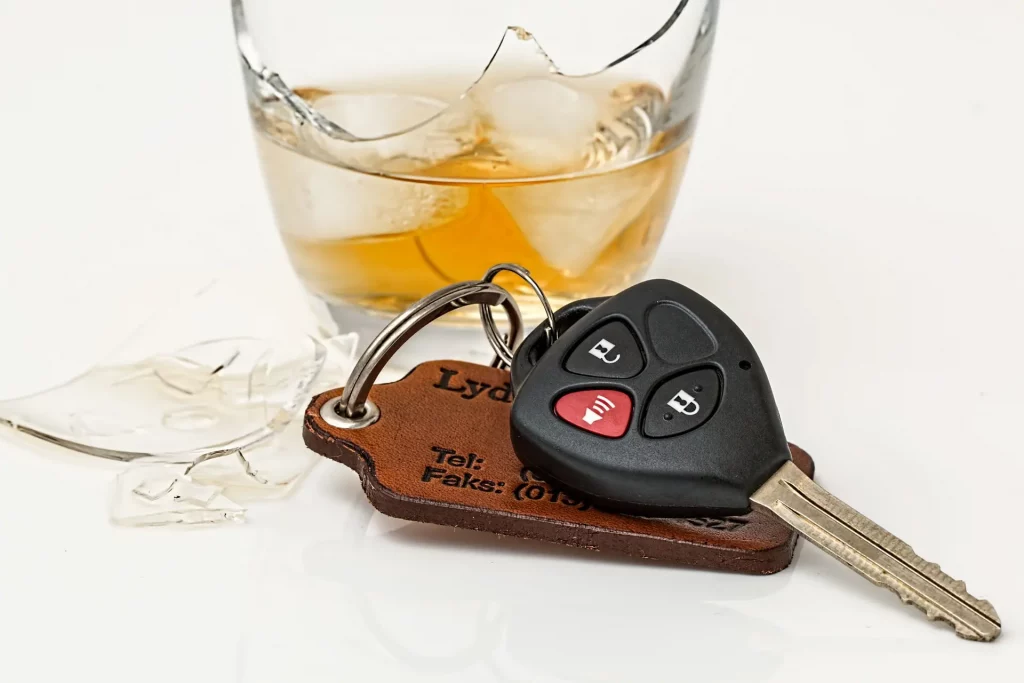Understanding New York Car Seat Laws
Car seat safety is of utmost importance when it comes to protecting children during car rides. In New York State, there are strict laws in place to ensure that children are properly secured in car seats or restraint systems. These laws aim to reduce the risk of injuries and fatalities in the event of a car accident. Understanding New York car seat laws is crucial for all parents and caregivers to ensure the safety of their children.
In this blog, we will discuss the requirements of child safety seats in New York, the legal age and height requirements for children, the penalties for not adhering to safety seat laws, the types of child safety seats appropriate for use, the correct usage of infant seats, the benefits of convertible child safety seats, the importance and usage of booster seats, the understanding of built-in vehicle child seats, the safety of child passengers in front seats, the laws regarding children in front seats, the usage of child safety seats in cars with airbags, the legal consequences of violating car seat laws in New York, the fines and penalties for non-compliance, the impact on driving record, the role of child safety seats in accident claims, the legal implications of child safety seats in accidents, how a lawyer can help in car accident claims involving children, and frequently asked questions related to New York car seat laws.
Requirement of Child Safety Seats in New York
In New York, the requirement of child safety seats is governed by stringent laws to ensure the protection of young passengers. Legal age and height requirements play a critical role in determining the appropriate type of safety seat for children. Adhering to these laws is crucial to avoid penalties and uphold the safety of young passengers. Understanding the state regulations and federal motor vehicle safety standards is essential for selecting the correct car seat for a child’s age and size.
Legal age and height requirements for children
In New York, children must be secured in an appropriate child safety seat until they reach the age of 8 or reach a height of 4 feet 9 inches. These guidelines are crucial for ensuring the safety of young passengers, as they align with the federal motor vehicle safety standard. By following these regulations, parents and guardians can help prevent serious injuries or fatal accidents. Understanding and complying with these age and height requirements is essential for every caregiver and motorist in the state of New York.
Penalties for not adhering to safety seat laws
Failure to comply with New York’s car seat laws can result in serious consequences. Violators may face fines, points on their driving record, and court appearances. The penalties for not adhering to safety seat laws are established to ensure the protection of young children. It is crucial for parents and guardians to understand and follow these laws to avoid legal repercussions and, more importantly, to keep children safe while traveling. Understanding the potential penalties can serve as a strong motivator for compliance.
Types of Child Safety Seats Appropriate for Use
There are various types of child safety seats suitable for use in New York. These include infant seats designed for newborns, convertible child safety seats that can adapt as the child grows, and booster seats for older children. Additionally, there are built-in vehicle child seats that come with specific vehicles. Each type is specifically designed to cater to the safety needs of children at different developmental stages, ensuring compliance with New York car seat laws and federal motor vehicle safety standards.
Infant Seats and their correct usage
When using infant seats, it’s crucial to ensure proper usage for the safety of young children. According to New York car seat laws, infants must be placed in rear-facing seats until they reach the seat’s height and weight limits. The harness should be at or below shoulder level, securing them snugly. It’s important to follow the manufacturer’s guidelines for correct installation and usage to provide optimal protection for infants in case of accidents.
Convertible Child Safety Seats and their benefits
Convertible child safety seats offer versatility by accommodating children as they grow. These seats can be adjusted from rear-facing to forward-facing, providing long-term use. This versatility offers cost savings and ensures that the child is consistently in a seat appropriate for their size. Additionally, convertible seats often have higher height and weight limits, allowing children to remain rear-facing for longer, which is recommended by safety experts. The ability to adapt to a child’s growth makes convertible seats a practical and economical choice for parents.
Importance and usage of Booster Seats in NY
Booster seats play a crucial role in child safety, especially in New York. These seats elevate children, ensuring that the vehicle’s seat belt fits them properly, reducing the risk of injury in the event of a crash. In NY, children are required to use booster seats until they reach the age of 8 or reach a height of 4 feet 9 inches, as per state law. This ensures that the seat belt fits across their lap and shoulders correctly, providing optimal protection.
Understanding built-in Vehicle Child Seats
Understanding Built-In Vehicle Child Seats
Built-in vehicle child seats are integrated into the design of some vehicles to provide a convenient and secure way to restrain young passengers. These seats are regulated by federal motor vehicle safety standards and must meet specific criteria for safety and usability. It’s crucial for parents to understand the proper usage and limitations of these built-in seats to ensure the protection of their children while traveling.
Safety of Child Passengers in Front Seats
Children’s safety in the front seat is a critical concern under New York car seat laws. It is illegal for children under the age of 13 to sit in the front seat. This regulation is in line with the national recommendations of the American Academy of Pediatrics to prevent injuries and fatalities. Additionally, it is important to be aware of the interaction between airbags and child safety seats to ensure maximum protection for young passengers. Understanding these laws is essential to avoid penalties and, more importantly, to protect the lives of young passengers.
Laws regarding children in front seats
In New York, it’s illegal for children under 12 years old to sit in the front seat unless they are in a car seat or a booster seat. The use of a rear-facing car seat in the front seat is prohibited if there is an active passenger airbag. This law is in place to protect children from the potential dangers posed by airbags, which are designed for adult passengers. Adhering to these regulations is crucial for ensuring the safety of young passengers.
Usage of child safety seats in cars with airbags
When it comes to using child safety seats in cars equipped with airbags, it’s crucial to follow specific guidelines to ensure the safety of young passengers. The National Highway Traffic Safety Administration (NHTSA) advises that it’s generally safe to install rear-facing child safety seats in the front seat of a vehicle with airbags, as long as the airbags can be deactivated. However, the safest position for a child’s car seat is in the back seat, away from active airbags. Ensuring that the child safety seat is securely installed and adheres to the recommended guidelines is essential for maximum protection.
Legal Consequences of Violating Car Seat Laws in NY
Violating car seat laws in New York can result in fines, penalty points on your driving record, and potential legal consequences. The fines for non-compliance can range from $25 to $100 for the first offense. Subsequent violations may lead to steeper penalties, with potential points on the offender’s driving record. Understanding and adhering to the car seat laws is crucial to avoid facing these legal consequences. It’s important to prioritize the safety of child passengers to prevent any legal repercussions.
Fines and penalties for non-compliance
In New York, failing to comply with car seat laws can result in fines ranging from $25 to $100 and may also lead to the assessment of three penalty points on the driver’s record. Repeat offenders may face steeper fines and increased penalty points. The state takes these regulations seriously to ensure the safety of young passengers. It’s crucial to stay informed about the specific requirements to avoid legal consequences and, more importantly, to protect the well-being of children.
Impact on driving record
Violating New York’s car seat laws can have a detrimental impact on your driving record. In addition to potential fines and penalties, a violation related to child safety seats can result in points being added to your driving record. These points can lead to increased insurance premiums and, in severe cases, license suspension. Therefore, it’s crucial to prioritize the safety of young passengers and adhere to all car seat laws to avoid any negative consequences on your driving record. Remember, staying compliant with these laws is essential for ensuring the safety of child passengers.
The Role of Child Safety Seats in Accident Claims
Child safety seats play a critical role in accident claims, impacting legal proceedings and settlements. When involved in an accident, the correct car seat can mitigate serious injury to a child, demonstrating adherence to car seat laws. This adherence strengthens accident claims and highlights responsible parenting. Conversely, improper use of child restraint systems can weaken legal arguments. Therefore, understanding the role of child safety seats in accident claims is crucial for parents and legal representatives alike.
Legal implications of child safety seats in accidents
In the event of a car accident, the correct car seat and restraint systems can significantly affect the legal implications. Child safety seats, as mandated by New York car seat laws, play a crucial role in protecting young children from serious injury. Adhering to the federal motor vehicles safety standards and New York state law regarding child passenger safety can impact accident claims. The proper usage of car seats, following height and weight requirements, can determine the outcome of legal proceedings involving child passengers.
How a lawyer can help in car accident claims involving children
In car accident claims involving children, a lawyer can provide invaluable assistance. They can navigate the complex legal procedures, ensuring that the child’s rights are upheld and advocating for fair compensation for any injuries sustained. Additionally, a lawyer with expertise in car accident claims involving children can engage with insurance companies and other parties involved, relieving the family of the burdens associated with these negotiations. Ultimately, legal support can provide the necessary guidance and advocacy during a challenging time.




